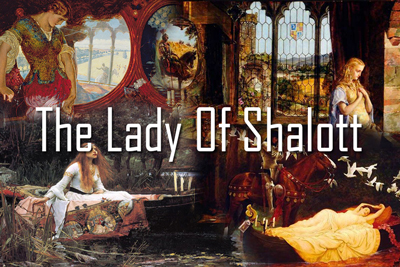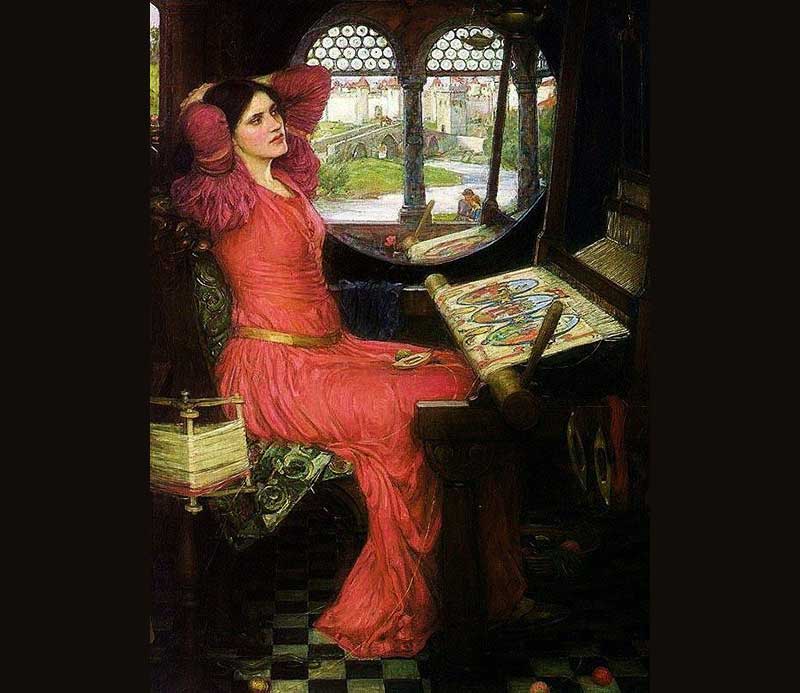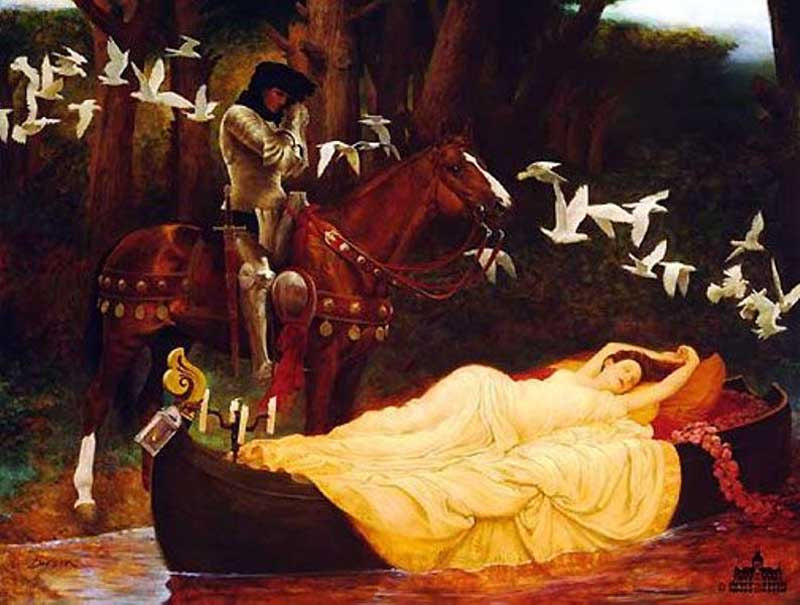
Fields of barley and rye fringes the sides of the stream far and wide. Through the fields a road leads to Camelot, home of the legendary King Arthur. People while treading through the road occasionally glance at the island in the middle of the river, the island of Shallot. There is a castle in the island with four grey towers.
Everybody is aware that the castle is the abode of the Lady of Shalott, but none ever had the luck to see her once. Reapers listen her song in the mornings and the evenings and they believe that it is the voice of the fairy, the Lady of Shalott.

Living in the castle, the Lady of Shalott weaves, all through the day and night, a magic carpet in bright colours. She is well aware about a curse. She knows, if she ever looks at Camelot, she is sure to face the evil consequences of the curse. So she weaves, avoids to look at Camelot directly and keep on looking at the reflected images of the outer world in her mirror.
She watches groups of smiling girls, loving couples, sometimes a priest, sometimes a shepherd, and once in a while, the riding knights in pairs. She feels sad, as she does not have any knight in her life to save her from the situation. Yet, she watches the images and weaves all of the scenes into her web. Finally, she becomes tired of the images of real life and admits that she is half sick of shadows.


One day she beholds the reflection of Sir Lancelot in her mirror. She watches Sir Lancelot, a brave knight in the court of King Arthur, with the emblem of a knight forever kneeling to a lady on his breast and a helmet on his head. Sunlight glimmers on his brow and his black curly hair flows from under his helmet. He enjoys singing alone, while making his way toward Camelot. Though she is aware of her curse, the image of the handsome knight unsettles her and despite the prohibition, she looks at him directly through her window. Immediately, the web flies out of the window, the mirror cracks and she knows, ‘the curse has come upon me’.



Suddenly the autumn rain starts. The young lady leaves her castle, walks down to the river and finds a boat. She then writes her name on the bow of the boat and gets into it. Dressed all in white, she lies down in it, and starts to sing her last song as she drifts down the river to Camelot. Before she reaches Camelot, she dies. When the locals find the boat and the body, they realize her identity and feel sad for her. Lancelot prays to God for her and asks to bless her soul.

The Lady of Shalott is one of the most popular poems of Lord Tennyson and also a favourite subject for the Pre-Raphaelites. William Holman Hunt, an English painter and one of the founders of the Pre-Raphaelite Brotherhood, was deeply inspired by the tale’s psychological drama. In his painting he captured the very moment the Lady catches sight of Lancelot’s reflection in the convex mirror.
It cracks and the weaving threads wrap round her twisted body. In fact, the legacy of the highly sophisticated painting of the Flemish painter Van Eyck went even beyond the Pre-Raphaelites to inspire artists well into the twentieth century.

Italian painter John William Waterhouse painted three versions of the Lady of Shalott in 1888, 1894 and 1915.His close attention to detail and color, accentuation of the beauty of nature and his interpretation of a vulnerable woman are representative of his artistic skill.